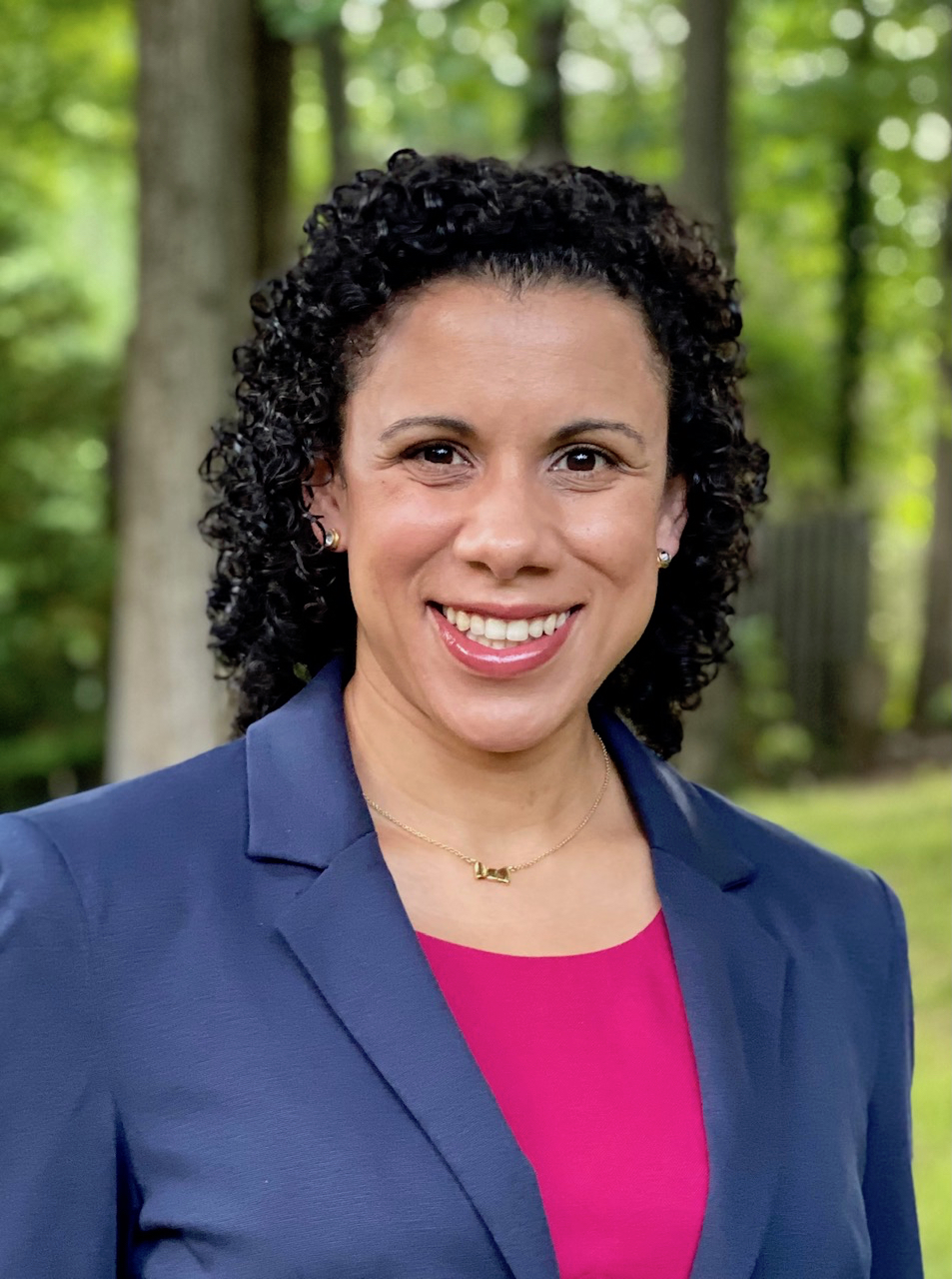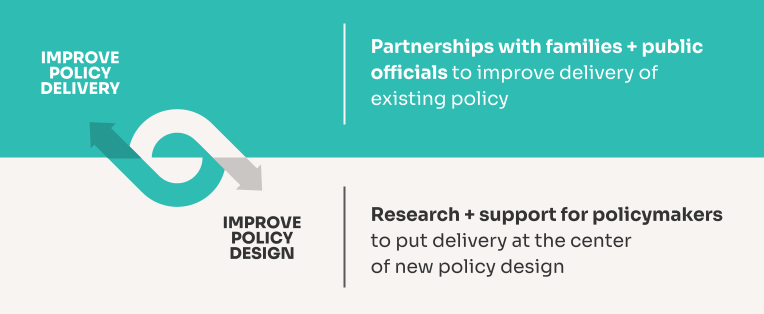According to New America’s recent “Lost in the Labyrinth” report, “Families with the youngest children stand to gain the most from improved access to benefits, yet persistent fragmentation in early care and education programs creates challenges in finding, applying for and enrolling in services.” Early Learning Nation magazine sat down with Erica Meade, senior policy manager, New Practice Lab at New America (recently named a winner in Fast Company’s 2023 World Changing Ideas Awards), to find out how we got here—and what can be done.
MARK SWARTZ: What is the overall goal of the New Practice Lab?
ERICA MEADE: We are working to improve public benefit access for three million families with young children over the next three years. Part of that involves our improving policy design and how it’s delivered on the ground. Additionally, we’ve just started an extended period of engagement with families with young children across the country.
👉 Meet the New Practice Lab: Where Policy and Delivery Converge
SWARTZ: What does that look like?
MEADE: The first step is a series of co-design workshops where we ask, ‘What does a thriving family life look like to you? What would you need to have that happen, not just from the government, just in your life?’ Then from those workshops, we kickstart an extended diary study so we can continue following up with the families over time.
SWARTZ: How are families currently accessing information they need?

MEADE: It’s a maze, and we’ve discovered that there’s a lot of variation among states. There are some outliers that have a streamlined point of entry and that tell families, ‘Here are the things you may be eligible for, here’s how you apply.’ But then there are others where it’s a real struggle to get information. This report really illuminated the need to streamline information and take a multi-pronged approach to meet families where they’re at.
👉 Lost in the Labyrinth: Helping Parents Navigate Early Care and Education Programs
SWARTZ: Does that go for all the benefits available to families with young children?
MEADE: For the more mainstream traditional safety net programs (Temporary Assistance for Needy Families, Earned Income Tax Credit, Supplemental Nutrition Assistance Program), some states are getting better at saying, ‘Oh, you might also be eligible for this.’ That certainly has come a long way, but what doesn’t receive as much attention is child care, Head Start, early intervention services, preschool benefits. These are still very much fragmented and, more often than not, left out of the overarching movement of streamlining access and information.
SWARTZ: How did we, as a society, end up with this situation?
MEADE: We got here by updating the system piece by piece by piece. If you were to build the government today, you might have a Department of Children and Families, but instead this is the work of many agencies. Ultimately there’s an underlying issue with the whole structure: it is focused on programs, not the people or communities they serve. We have lost sight of how all these programs and services interact to reach the children and families they are intended to serve.
—From the New Practice Lab’s Bolstering State and Local Care Infrastructure with Federal Recovery Funding
SWARTZ: And the families that can afford it least are paying the price.
MEADE: In many cases, yes. The people with the fewest resources do spend an inordinate amount of time trying to navigate complex systems that were likely not built to prioritize human navigation. Until recently, navigability was never a top concern.
SWARTZ: Is it paranoid to say it was designed not to work for families?
MEADE: It was not designed to work for families.
SWARTZ: You worked in government, right?
MEADE: Yes, I was with the U.S. Department of Health and Human Services for 12 years.
SWARTZ: So, tell me if I’m mischaracterizing this, but the government doesn’t think like Walmart thinks. “If you’re buying Triscuits, you might also want peanut butter, so we’re going to put the peanut butter nearby.” Walmart has experts on how consumer minds operate. That probably hasn’t been a strength of government historically.
MEADE: The government was built in a truly different time for a different time. Historically, the government hasn’t brought the lens of the consumer to its work but I think they’re getting better at it in recent years. Also, control is often given to the states, and some states are more innovative than others. There is definitely space for that sort of human-first, consumer mindset to be more layered into these programs and services.
SWARTZ: Which states are innovating?
MEADE: South Carolina’s First Five portal has an eligibility screener for about 40 programs and services. They changed the experience for the consumer for accessing it and getting information about it. South Carolina has been able to make leaps in this area without having to actually go through that process of restructuring the government on the back end—which is the route New Mexico, Oregon and Colorado are going.
SWARTZ: In addition to being better designed, the system needs more money. Or is there a way that design will unlock more money?
MEADE: One would hope. There’s a lot of talk about evidence-based practices and designing policy around what we know works and doesn’t work. The idea, of course, being that resources are directed to the practices that are proven to lead to better outcomes for children and families. But then we see situations where there’s clear evidence of positive outcomes from a policy design innovation that didn’t result in more funding now, though maybe it will in the future. One existing funding opportunity is in the State and Local Fiscal Recovery Fund dollars from the American Rescue Plan.
👉 Bolstering State and Local Care Infrastructure with Federal Recovery Funding
SWARTZ: What kinds of solutions are you seeing?
MEADE: Of the $350 billion total, we found 700 projects and $3 billion in care investments. Two-thirds of that was on child care-related projects. We see this funding stream and these projects as little pilots to build that base even more and to help make the case moving forward, for continued investment. We have seen places that are using the money to address family access, and there are others that are using the funds for care, workforce and development subsidies.
SWARTZ: Both of those are valid, as far as you’re concerned?
MEADE: Definitely. In an ideal world, state-level implementation would allow for tailoring to the population and the specific needs, and the lessons from making these changes would be looped back into the future of how things get designed.

Mark Swartz
Mark Swartz writes about efforts to improve early care and education as well as developments in the U.S. care economy. He lives in Maryland.




